Sporobolus heterolepis – a Multi-Use Dynamo
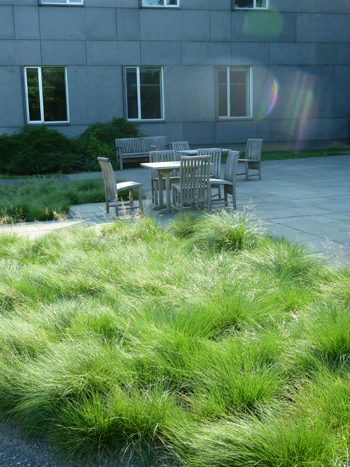 The middle of North America, roughly a triangular area stretching from Alberta, Manitoba, and Saskatchewan Canada down to southern Texas and Mexico, and across from Indiana westward to the base of the Rocky Mountains, roughly 1.4 million square miles, was covered by the North American Prairie. The French called the rolling plains of grassland “prairie” from a word meaning meadow grazed upon by cattle. The prairie was dominated by herbaceous plants and perennial grasses with a few scattered trees. Prairies varied depending on location and proximity to the Rocky Mountains. The farther east one traveled, the wetter the prairie became from more abundant rainfall. Grasses like big bluestem, Andropogon gerardii, and Indian grass, Sorghastrum nutans, thrived, providing food for a variety of wildlife. Grasses developed adaptations to help them survive a dynamic ecosystem filled with foraging herding animals, varied and limited precipitation, and frequent wildfires. One grass playing a vital role in the prairie ecosystem and gaining more attention in recent years is prairie dropseed, Sporobolus heterolepis.
The middle of North America, roughly a triangular area stretching from Alberta, Manitoba, and Saskatchewan Canada down to southern Texas and Mexico, and across from Indiana westward to the base of the Rocky Mountains, roughly 1.4 million square miles, was covered by the North American Prairie. The French called the rolling plains of grassland “prairie” from a word meaning meadow grazed upon by cattle. The prairie was dominated by herbaceous plants and perennial grasses with a few scattered trees. Prairies varied depending on location and proximity to the Rocky Mountains. The farther east one traveled, the wetter the prairie became from more abundant rainfall. Grasses like big bluestem, Andropogon gerardii, and Indian grass, Sorghastrum nutans, thrived, providing food for a variety of wildlife. Grasses developed adaptations to help them survive a dynamic ecosystem filled with foraging herding animals, varied and limited precipitation, and frequent wildfires. One grass playing a vital role in the prairie ecosystem and gaining more attention in recent years is prairie dropseed, Sporobolus heterolepis.
Prairie dropseed is a fine-textured, clump-forming perennial grass. Arching blades of foliage, originating from a circular base, typically reach 2-3’ in height. Mature plants produce light and airy flower panicles. Tiny rounded seeds drop in autumn, a characteristic which gave rise to the common name, dropseed. It is said that Native Americans collected and ground the seed into flavorful flour. Many species of birds also find the seeds appetizing.
Perhaps the greatest appeal of Sporobolus heterolepis is its adaptability. According to the United States Department of Agriculture Natural Resources Conservation Service website, prairie dropseed is found naturally occurring in the North American Prairie as well as many eastern seaboard states including Virginia, Maryland, North Carolina and Connecticut. Sadly, it is listed as threatened and/or endangered in those states due to habitat transformation and destruction. It is this wide-spreading geographic range, coupled with an attractive aesthetic quality that has led to a greater appreciation and increased use of Sporobolus heterolepis.
Sporobolus can thrive in a wide range of soils from clay to rocky, dry soils, but is not tolerant of boggy conditions. It is this characteristic that makes dropseed such a versatile and widely-used plant throughout the Scott Arboretum. Plantings can be found growing under Pinus nigra in front of the Wister Center, on the green roof atop Alice Paul Residence Hall, and around the Science Center in the Infiltration Beds.
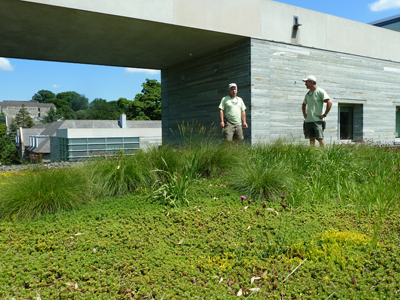
Gardeners, Chuck Hinkle and Lars Rasmussen, survey the growth of Sporobolus heterolepis atop Alice Paul green roof. photo credit: J. Coceano
Gardener Lars Rasmussen tends to both the Infiltration Bed areas and the green roofs. He is particularly impressed with the drought tolerance Sporobolus heterolepis has demonstrated as a green roof plant for full sun exposures. It has out-performed other grasses and even seeded in a few locations. The grass has thrived atop the roof since being planted in 2004. Supplemental irrigation is provided in times of drought.

Sporobolus is the plant of choice in the Infiltration Beds around the Science Center. photo credit: J. Coceano
Several infiltration beds are found around the Science Center where they help capture rooftop stormwater. Sporobolus is the plant of choice atop these beds. The grass forms a visually enticing symmetry and channels the feeling associated with lawns while performing a practical function within the infiltration bed. Maintenance of these beds is fun to witness. Wildfires play a vital role in maintaining the integrity of the prairie ecosystem. Fire consumes tree saplings which, if left to grow, would shade out the sun-loving grasses and wildflowers. Fire also burns away thatch, which adds nutrients back to the soil and helps break seed dormancy and promote germination for many plants.
This rejuvenating phenomenon is mimicked at the Scott Arboretum. While students are away on spring break, Lars uses a propane weed torch to burn the foliage. This typically occurs in early March. Blackened, charred tufts remain and provide little sign of life. As spring approaches, tiny blades begin to emerge, eventually covering the tuft, erasing all signs of the burn. For the home gardener, a cut with pruners provides a similar service.
While this small grass has great potential for green roofs and water management, it also has applications for the home gardener. It is a multi-season interest plant as the tufts take on an attractive fall color which lasts through the winter months. It can thrive around black walnuts, Juglans nigra, attracts birds, and is rarely bothered by pest or disease. With so many appealing features, it’s difficult not to appreciate such a beautiful workhorse.





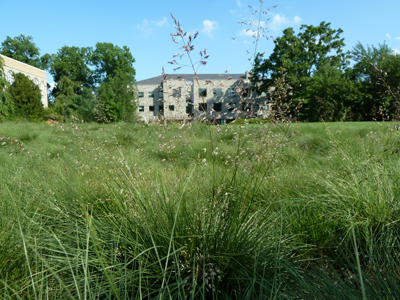
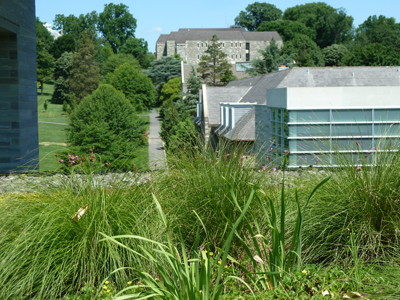
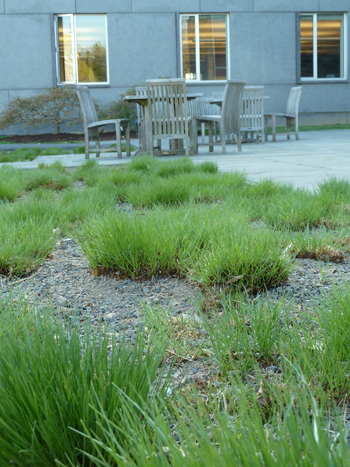
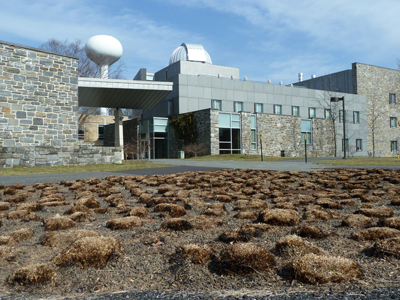
No Comments